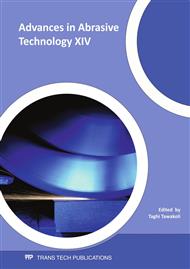p.633
p.638
p.647
p.653
p.659
p.666
p.672
p.678
p.684
Influence of Wafer Grinding and Etching Techniques on the Fracture Strength of Thin Silicon Substrates
Abstract:
We investigated the influence of various backside thinning techniques on the fracture strength of thinned single crystalline silicon wafers by means of ring-ball breaking tests and atomic force microscopy (AFM). In the case of wafer grinding the mean breaking force of samples depends on the surface roughness after fine grinding. Subsequently applied stress-relief processes spin-etching, CMP polishing and plasma dry etching lead to a strong increase of breaking force by a factor of 6 to 15. The three different stress-relief techniques resulted in the same maximum values of breaking force. However, the required amount of material removal is specifically different and also depends on the conditions of initial grinding step. The results will help to identify optimum wafer thinning sequences in the field of MEMS devices and future applications of ultra-thin and flexible integrated circuits.
Info:
Periodical:
Pages:
659-665
Citation:
Online since:
August 2011
Authors:
Price:
Сopyright:
© 2011 Trans Tech Publications Ltd. All Rights Reserved
Share:
Citation:


